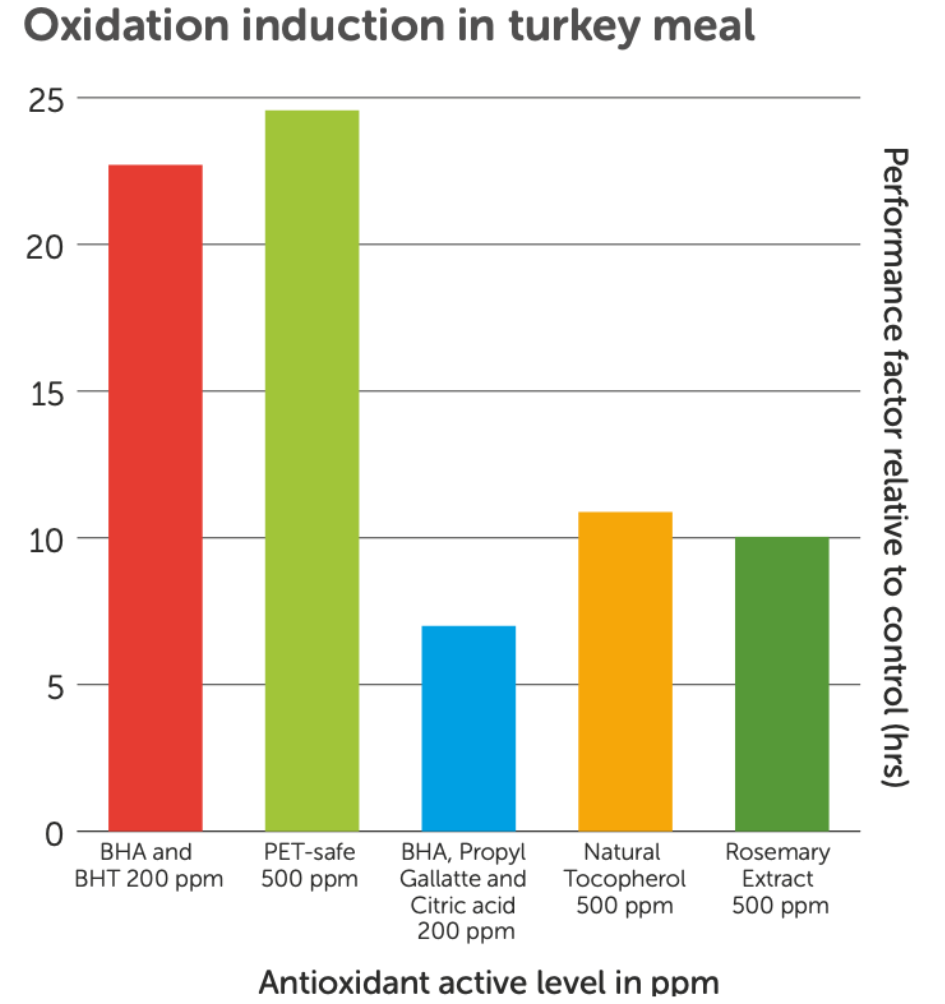Cost effective options to natural antioxidants

The transition from synthetic antioxidants to natural ones in pet food for safety reasons presents new challenges, but there are other alternatives.
Forces of change
A concern for naturalness in human foods has extended to a greater awareness about additives in pet food. This has been accompanied by a slow but steady increase in the re-evaluation of the safety of synthetic antioxidants in pet food. This re-evaluation has extended to the antioxidants butylated hydroxyanisole (BHA) and butylated hydroxytoluene (BHT). Most current concerns are expressed over BHA and, in particular, its re-authorisation for use in cat food.
Natural options
The definition of naturalness is not clear and is subject to interpretation. The only class listed as natural antioxidants are natural mixed tocopherols (mixed homologues of vitamin E) and vitamin E itself. In pet food, flavour compounds and botanical extracts offering antioxidant capacity are commonly utilised, such as rosemary extracts.
Understanding the options
However, the desired transition from synthetics (BHA and BHT) to natural additives might reveal that naturalness comes at a price – in terms of both cost and the stability of the pet food. Natural alternatives to synthetic antioxidants usually not only cost more, but are also less effective. Therefore, more attention should be paid to the synergy between naturals and ‘more acceptable’ synthetics used in food systems with proven long-standing safety, such as infant nutrition. Ascorbates, gallates and chelates work well with natural antioxidants and are cost-effective. The drivers of these compounds work together and are suitable for use in the pet food process.
Cost-effective antioxidants in fats and pet meal
Antioxidants used in pet foods, such as BHA and BHT, are typically fat-soluble. Non-oil-soluble polar antioxidants work efficiently in fat systems as coating fats for kibbles, due to the ‘polar-paradox’. A study based on factory-produced turkey meal (higher in polyunsaturated fats) shows the efficacy of this approach while avoiding using BHA and BHT. The turkey meal was produced using proprietary antioxidants containing BHA and BHT, naturals and the Vitablend product PET-safe (excluding BHA and BHT). Antioxidant capacity was measured by the induction point (hrs) to oxidation under accelerated conditions using the Mikrolab Oxipres. Relative performance is shown compared to the standard control of no antioxidant.
The study showed that PET-safe (without BHA and BHT) extends the shelf life of the turkey meal by a factor of 25 compared with the addition of no antioxidant. This matches the performance of standard combinations of BHA and BHT, yet without the additional cost that is often associated with using natural antioxidants. Vitablend places emphasis on formulation and application work to help manufacturers decide on the most appropriate antioxidant to substantiate any change.

